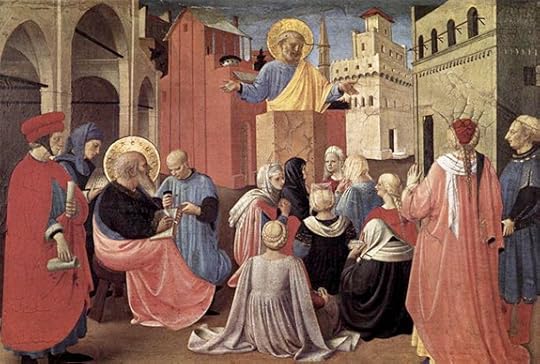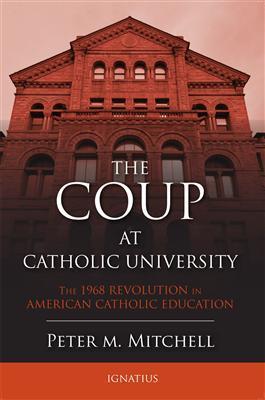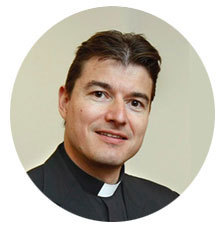Carl E. Olson's Blog, page 47
April 21, 2015
A Lion of the American Church: Thoughts on the Passing of Cardinal George

Cardinal Francis E. George, who retired as archbishop of Chicago in 2014, died April 17 after a long battle with cancer. He is pictured in a 2013 photo. (CNS photo/Karen Callaway, Catholic New World)
A Lion of the American Church: Thoughts on the Passing of Cardinal George | Fr. Robert Barron | CWR
Cardinal George was a spiritual father to me. In his determination, his pastoral devotion, his deep intelligence, his kindness of heart, he mediated the Holy Spirit.
Cardinal Francis George, who died last week at the age of 78, was obviously a man of enormous accomplishment and influence. He was a Cardinal of the Roman Church, a past president of the United States Conference of Catholic Bishops, the Archbishop of one of the largest and most complicated archdioceses in the world, and the intellectual leader of the American Church. A number of American bishops have told me that when Cardinal George spoke at the Bishops’ meetings, the entire room would fall silent and everyone would listen.
But to understand this great man, I think we have to go back in imagination to when he was a kid from St. Pascal’s parish on the Northwest side of Chicago, who liked to ride his bike and run around with his friends and who was an accomplished pianist and painter as well. At the age of thirteen, that young man was stricken with polio, a disease which nearly killed him and left him severely disabled. Running, bike riding, painting, and piano playing were forever behind him. I’m sure he was tempted to give up and withdraw into himself, but young Francis George, despite his handicap, pushed ahead with single-minded determination. The deepest longing of his heart was to become a priest, and this led him to apply to Quigley Seminary. Convinced that this boy with crutches and a brace couldn’t make the difficult commute every day or keep up with the demands of the school, the officials at Quigley turned him away. Undeterred, he applied to join the Oblates of Mary Immaculate, a missionary congregation. Recognizing his enormous promise and inner strength, they took him in.
I bring us back to this moment of the Cardinal’s life, for it sheds light on two essential features of his personality. First, he was a man who never gave up. I had the privilege of living with Cardinal George for six years and thus I was able to see his life close-up. He had an absolutely punishing schedule, which had him going morning, noon, and night, practically every day of the week: administrative meetings, private conversations, banquets, liturgies, social functions, public speeches, etc. Never once, in all the years I lived with him, did I ever hear Cardinal George complain about what he was obliged to do. He simply went ahead, not grimly but with a sense of purpose. When he first spoke to the priests of the Archdiocese as our Archbishop, he said, “Never feel sorry for yourself!” That piece of advice came, you could tell, from the gut.
Second, his identity as an Oblate of Mary Immaculate deeply marked him as a man of mission.
April 20, 2015
The De-Christianization and Gradual Islamization of France

Firefighters carry a victim on a stretcher at the scene of the deadly shootings at the Paris offices of Charlie Hebdo, a satirical newspaper, on Jan. 7th. (CNS photo/Jacky Naegelen, Reuters)
The De-Christianization and Gradual Islamization of France | Charles Adhémar | CWR
Islamist networks in France and across Europe are increasingly organized and well-armed, but it is France that is sitting on a powder keg
Just before Christmas, as I was walking along the streets of Paris, I happened to see the disgraceful cover of the latest edition of Charlie Hebdo, a failing satirical magazine well known for its insults against religion and general vulgarity. It showed the Blessed Virgin Mary in an outrageous, almost pornographic position.
Such crudeness was not a first for Charlie Hebdo. Although the cover angered me, the spirit of Christmas overrode any hateful thoughts. Two weeks later, on January 7, the Kouachi brothers (of Algerian origin) shot the men behind the irreverent magazine, along with two policemen and a hapless maintenance worker. And a day later, Amedy Coulibaly (of Malian origin) murdered a policewoman and four Jews after taking hostages in a kosher supermarket.
The three gunmen who killed 17 French victims were of French nationality. They had been born in France, raised in France, educated in France, and fed by the French welfare state—before taking an all-too-common and desperate path: crime, prison, Islamism, delinquency, and commitment to global jihad. Along with their henchmen, they were engaged in a war against France, from within and without. Make no mistake: This is a civil war—although one camp is unarmed.
Are we Charlie?
The Charlie Hebdo killings compel us to look frankly at reality—without the hollow rhetoric of our political classes or the complacence of the media. In fact, for a while, a few days after the killings, it seemed like French people were beginning to wake up. When, on Sunday, the 11th of January, Paris and several other French cities witnessed the largest demonstration in the history of France, it seemed that there was a new realization of the threat now within our borders. A “Republican march” of around 4 million people (according to official sources)—more than during the funeral of Victor Hugo in 1885—with thousands of anonymous people following behind almost the entire political class, from France and abroad (including 44 foreign heads of state) seemed to suggest that people were ready to say, “enough is enough”.
The watchword of this moment of national unity was, of course, “je suis Charlie”. But are we really Charlie?
April 19, 2015
Preachers who are in love with Christ

"St. Peter Preaching in the Presence of St. Mark" (c. 1433) by Fra Angelico [WikiArt.org]
A Scriptural Reflection on the Readings for April 19, 2015, the Third Sunday of Easter | Carl E. Olson
Readings:
• Acts 3:13-15, 17-19
• Ps 4:2, 4, 7-8, 9
• 1 Jn 2:1-5a
• Lk 24:35-48
Archbishop Fulton Sheen, who knew a few things about preaching, once wrote, “The preacher who bores others in the pulpit is a bore before he even gets into it.” Why? Is it because the preacher hasn’t worked on his delivery? Or because he has failed to be relevant in his words? No, Sheen wrote, it is due to a much deeper reason: “He is not in love. He is not on fire with Christ. He is a burned out cinder floating in the immensity of catchwords. … Some other source than Christ is behind the sociological platitudes, moral chestnuts and political bromides of the preacher.”
Strong words, but words to be taken seriously. The Church and the world both need good preaching—and preachers who are in love with Christ.
Today’s first reading describes the second powerful sermon delivered by a man who would not ordinarily, as men gauge such things, be considered a candidate for “great preacher” status. Although the Apostle Peter had been a successful fisherman and businessman, he likely possessed a modest educational background; he certainly was not a theologian in the sense of having studied in academic halls and having earned degrees. In addition, Peter often displayed a rash, petulant personality ill suited for the responsibility of preaching.
But not only was Peter—who had denied Christ three times not many weeks prior!—not a boring preacher, he was a preacher who spoke with power, authority, conviction, and words cutting to the heart. His sermon on Pentecost (Acts 2:14-41) was a masterful and moving declaration that Jesus Christ, crucified and risen, is Lord and Messiah. It centered, as all true preaching does, on the kerygma—the proclamation of salvation for mankind through the resurrection of Christ, “the Holy and Righteous One”.
At the end of both sermons, Peter exhorted his listeners to repent and convert so sins might be removed, or “wiped away”. The removal of sin is through baptism, by which the Holy Spirit cleanses and purifies man, bringing him into intimate communion with the Father through the person of the Son. As the Catechism explains, “From the very day of Pentecost the Church has celebrated and administered holy Baptism” (par 1226), and, “Also, Baptism is the principal place for the first and fundamental conversion. It is by faith in the Gospel and by Baptism that one renounces evil and gains salvation, that is, the forgiveness of all sins and the gift of new life” (par 1427).
St. John, in his first epistle, provides further theological insight into this saving work. The Son, he writes, is a righteous and holy Advocate for us before the Father, as we cannot merit any favor or grace by our natural efforts. Jesus “is expiation for our sins”, that is, he took upon himself the punishment we deserved for our sins, and therefore made divine reparation as only the Incarnate Word can do. Now made children of God, we are called to keep the commandments—not as mere duties, but as active and willing participation in the love of God.
These saving truths are communicated in various ways, and preaching is an essential part of that proclamation. Fr. Peter John Cameron, O.P., in his book, Why Preach: Encountering Christ in God's Word (Ignatius Press, 2009), notes what preaching is not. “But preaching is not speech-giving”, he warns, “No one was ever saved by a message. It would have been a waste of time for the Word to become flesh if it sufficed for the Father to send a memo instead of his Son. No one was ever saved by a mere discourse.” No, he insists, preaching discloses truth through “an encounter”.
That encounter is with the risen Lord. “Look at my hands and my feet”, Jesus told the frightened disciples, “Touch me and see…” There is the encounter: Look at Christ. Touch Christ. See Christ. Not just with physical sight, but also with spiritual vision. Then love is born—and it is never boring!
(This "Opening the Word" column originally appeared in the April 22, 2012, edition of Our Sunday Visitor newspaper.)
April 18, 2015
Who really won? The sisters or the Vatican?”

Pope Francis meets with representatives of the U.S. Leadership Conference of Women Religious in his library in the Apostolic Palace at the Vatican April 16. (CNS photo/L'Osservatore Romano)
Who really won? The sisters or the Vatican?” | Ann Carey | CWR blog
The various "LCWR vs. The Vatican" news stories have misunderstood or misrepresented many of the basic facts
A French journalist I know called me for help on an article she was writing about the reform plan for the Leadership Conference of Women Religious (LCWR) accepted April 16 by the Congregation for the Doctrine of the Faith (CDF).
She said she was confused by all the articles on the topic in the U.S. press and wanted to ask me “Who really won? The sisters or the Vatican?”
At first I was stunned by this win-lose terminology, and I wondered why she would have considered the doctrinal reform of a canonically-erected entity to be a conflict of some kind, with the outcome producing a winner and a loser.
My own impression of the outcome was that everyone won because the CDF had helped the LCWR to be a better organization for sisters by refocusing its role to be “centered on Jesus Christ and faithful to the teachings of the Church,” according to the final report.
Then I took time to read several media stories on the topic and discovered that some of the articles made it sound as if the CDF’s reform of the LCWR indeed was adversarial, akin to “Gunfight at the O.K. Corral” or a new “Star Wars” sequel.
Consider, for example, this headline from the April 16 New York Times: “Vatican Ends Battle With U.S. Catholic Nuns’ Group.” Writer Laurie Goodstein then went on to use such inflammatory language as “confrontation,” “vexing and unjust inquisition” and “standoff.”
Several other articles used similar language, saying the reform effort was a “takeover” of the group, and some simply declared that the sisters had won a battle with the Vatican. Miriam Krule writing for Slate called the reform agreement a “victory and vindication for LCWR.”
It seems as if some writers simply shaped the outcome to reflect their own hopes and expectations. No wonder my French friend was confused.
Adding to her confusion were articles that contained downright incorrect information on the topic, making me wonder if the writers had actually read the CDF-LCWR joint final report. Perhaps accurate research is just not their thing.
For example, several articles reported that the reform was ended “abruptly” or “early,” an indication that the Holy See just wanted to be done with the matter.
April 17, 2015
Cardinal Francis George, the Emeritus Archbishop of Chicago, dies at 78

Chicago, Ill., Apr 17, 2015 / 12:20 pm (CNA/EWTN News).- Cardinal Francis George, the Emeritus Archbishop of Chicago, passed away Friday morning after a long batter with cancer.
Archbishop Blase Cupich, who currently heads the archdiocese, remembered Cardinal George as “a man of peace, tenacity and courage.”
At an April 17 press conference, Archbishop Cupich lauded the cardinal for his bravery in overcoming challenges, which included a battle with polio as a teenager that left his legs permanently weak.
“Cardinal George was a respected leader among the bishops of the United States,” Archbishop Cupich noted, particularly pointing to his work to fight the clerical sex abuse scandal: “He stood strong among his fellow bishops and insisted that zero tolerance was the only course consistent with our beliefs.”
The 78-year-old cardinal had been fighting cancer for several years. He was first diagnosed with bladder cancer in 2006 and underwent a five-hour surgery to remove his bladder and other parts of his body affected by cancer. In 2012, his doctors discovered that the cancer had returned, this time to his kidney and liver.
In an effort to battle the returning cancer, Cardinal George took part in a cancer drug clinical trial last year, which experimented with helping the body recognize cancerous cells through the immune system. After it was determined that his trial was proving to be ineffective, he halted the treatment in January.
The first Chicago native to become the city’s archbishop, Cardinal George retired in 2014 amid his battle with cancer and was succeeded by Archbishop Cupich. He had shepherded the archdiocese since 1997.
Last year, he said that the cancer would likely be the cause of his death, but that he was counting on prayers so that he “might be of service to the Lord and His Church in the time left.”
April 16, 2015
Available soon: "The Coup at Catholic University: The 1968 Revolution in American Catholic Education"
Coming in late April from Ignatius Press:
The Coup at Catholic University: The 1968 Revolution in American Catholic Education

Fr. Peter Mitchell
1968 witnessed perhaps the greatest revolution in the history of the Catholic Church in the United States. It was led by Fr. Charles Curran, professor of Theology at the Catholic University of America in Washington, with more than 500 theologians who signed a "Statement of Dissent" that declared Catholics were not bound in conscience to follow the Church's teaching in the encyclical of Pope Paul VI, Humanae Vitae, that said artificial contraception is morally wrong because it is destructive of the good of Christian marriage.
The battle at Catholic University centered on the major question in Catholic higher education during the turbulent years after the Second Vatican Council, "What is the meaning of academic freedom at a Catholic university?" Curran and the dissenting theologians maintained they needed to be free to teach without constraint by any outside authority, including the bishops. The bishops maintained that the American tradition of religious freedom guaranteed the right of religiously-affiliated schools to require their professors to teach in accord with the authority of their church.
This book uses never-before published material from the personal papers of the key players at CUA to tell the inside story of the dramatic events that unfolded there. Beginning with the 1967 faculty-led strike in support of Curran, this book reveals the content of the internal discussions between the key bishops on the CUA Board of Trustees.
This work attempts to disprove both the standard "liberal" and "conservative" interpretation of the events of 1968, suggesting that the culture of dissent was a direct fruit of the excessive legalism and authoritarianism which marked the Church in the years preceding Vatican II. Because the polarization in 1968 has continued to define the experience of many American Catholics and has had an ongoing effect on Catholic education, this work should be extremely interesting to those who want to understand the past so as to move forward with a greater awareness of the strengths and weaknesses of Catholic education in the United States.
Praise for The Coup at Catholic University:
"Fr. Peter Mitchell's book explains the ideological roots of the identity crisis that Catholic higher education has suffered for the past 50 years and a way out of the confusion. Packed with fascinating historical detail and conclusive evidence, it will stimulate a lively discussion of the meaning of academic freedom within a Catholic university."
- Fr. Frederick Miller, S.T.D., Spiritual Director, College Seminary of the Immaculate Conception
"In this riveting history Fr. Mitchell tells a compelling story which reveals the origins and gives theological insight into the tensions still present in Catholic higher education. The Coup at Catholic University reveals hope for strengthening the identity and mission of our Catholic Universities by shining light on our recent past."
- Most Rev. Andrew Cozzens, S.T.D., Bishop of St. Paul-Minneapolis
Lord, I Would Believe

Jesus Heals the Epileptic Boy, by Harold Copping (1863-1932).
Lord, I Would Believe | Gary Knight | Homiletic & Pastoral Review
In this little expostulation, let us take a closer look at the state of mind of the demoniac’s desperate father, who says, “Lord I believe; help thou my unbelief.” It is not uncommon to recollect this expression of hope in the words, “Lord, I would believe: help me.” I am posed with the “problem” that only Mark relates the incident, and he does not expressly say the man would believe.
Mark, like the other synoptic writers, relates another significant story of Jesus’ encounter with the Samaritan woman who desired healing and deliverance of her daughter. In all accounts, Jesus appears to use the aspersion for Samaritans as cast by Jews of his day: dogs. This seemingly mean language is resolved, by some, as equivalent to saying, “is it right for the master to toss the meat for his children to those whom the Jews call dogs?” Posed this way, it is a leading question that begets the woman’s attestation of faith. While I’m sure that redaction is in the right spirit, taking it as the only solution misses something lovely. Let me explain.
In Mark’s version, and only in Mark, Jesus uses a particular word that means “puppies” or “pet dogs,” in contradistinction from the spurn of the day. Pet puppies, like little lambs are, for Jewish children, as for most cultures, beloved pets, as good as minor family members. Right away, this choice of language is to pose the woman’s concern from the point of view of her own child. Mark then has the woman reply to Jesus that even curs and mangy mongrels (the common sense of “dog” as used for a pariah) eagerly look for crumbs from the table. Not only her faith, but her humble self-abasement is rewarded by Jesus “for saying this.”
The fact that other synoptics have glossed the exchange, taking the woman at her own self-abasement (with its reward) does not negate what Mark wrote or Peter related (Mark being his scribe), and the difference shows a deliberate pointing out of the dramatic movement in this first account. The exception proves a rule: that Jesus, meek and tender, is inclined to condescend to the child.
Now, this principle of finding exceptions for the benefit of greater color or light is good and holy, when held in the heart of faith.
April 15, 2015
Tweeting with God, available now!
Tweeting with God, available now!

“Combines the timeless teaching of our faith with the best of modern technology.” – @cardinaldolan, Archbishop of New York

Tweeting with God
#Big Bang, prayer, Bible, sex, Crusades, sin, career
Fr. Michel Remery
Softcover, 432 pages, $21.95
View the flip book!

From Rev. Dr Michel Remery M.Sc. , the Vice Secretary General of the Council of European Bishops’ Conferences (CCEE), comes
the ideal book for young men and women
who are curious about the Catholic faith!
For new Catholics and current catechumens,
for anyone who wants to share his faith or freshen up his knowledge of the faith
– TWEETING WITH GOD is a perfect companion to the wildly popular youth catechism known as YOUCAT.
Watch the Book Trailer here!

Twitter is one of the most popular social media websites, with more than 200 million users worldwide. But how can Catholics best connect with God and spread their faith, especially via the social media platform that limits them to 140-character tweets? In his new book, TWEETING WITH GOD , Father Michael Remery provides tweets to 200 daring questions from young people about God, faith, and morality — among other topics. Father’s responses are in 140 characters or less, and provide expanded explanations based on the Catechism of the Catholic Church, YOUCAT and the Bible.

MEET THE AUTHOR
----------------------
Fr. Michel Remery is a Dutch Catholic priest. He was a member of an advisory commission for new media and youth at the Vatican Internet Service and worked with young people and university students in Leiden, Netherlands. He is currently vice secretary general of the Council of European Episcopal Conferences (CCEE).
After purchasing, download the TWEETING WITH GOD mobile-friendly app titled #TwGOD available through Google and iTunes to connect to YOUCAT and other resources while reading the book!



Website



YouTube
Copyright © 2015 Ignatius Press, All rights reserved.

Share

Tweet

Forward
April 13, 2015
The First Chapter of "The Rising" by Robert Ovies

The First Chapter of "The Rising" by Robert Ovies | IPNovels.com
Read the first chapter of the thrilling novel The Rising by Robert Ovies. If you like what you’re reading, visit the novel’s page to learn more or order!
One
It was, as wake services go, unremarkable. Marion Klein had been a faithful wife for twenty-one years, a gracious mother for seventeen, and a genuinely loved member of the St. Veronica parish staff for nearly six. She had more than what some might consider the usual number of close friends, due both to her highly visible position as parish secretary and her natural affinity for smiling one of those smiles that surges up easily and often to signal a deep and contagious appreciation of life.
Her easy disposition was a joy not only to her husband, Ryan, but also to her children, Truman and Dawn, both teens and both the only children of a St. Veronica parish staff member not named after a Roman Catholic saint—a meaningless aside that Father Mark Cleary had rolled his eyes over in mock dismay on more than one occasion during the half-dozen good years that he and Marion worked so closely together.
Since it had been her nature to find reason to smile in what others knew must be difficult circumstances, everyone wondered how Marion would handle the spreading cancer that her doctor whispered upon her exactly three years ago this month. But as everyone who came to the MacInnes Funeral Home agreed, she handled it as well as anyone could. She fought it with chemistry and good humor until a few days into June when she finally lay too weak to walk and too toxic to pretend and let Father Mark—her pastor, employer, and friend—anoint her with the oil of a sad and quiet blessing for what Father Mark said was her peace and healing but for what Marion knew was, in fact, her death.
Now, with a thin, gray Tuesday rain sprinkling the beginnings of another humid Michigan summer and 124 friends and relatives gathered to visit and cry and smile and say good-bye to a dear friend and companion, Father Mark recalled Marion’s cheerfulness and offered a prayer that she now, at last, would be completely and finally healed in God, the One in whom, for all of eternity, “Marion’s joy will be complete.”
 He felt the loss of her company personally, and everyone knew it. It was appreciated. Then he invited others to share some memory and a number of them did, including Marion’s sixteen-year-old son, who told about having to eat tomato soup and bacon at his mom’s insistence every time he broke a fever, “to get salt back into my system”, and how his mother’s jokes had helped him through so many hard times of his own, even though he was only a teenager, and that he would really, really miss her. His thirteen-year-old sister talked briefly about carnivals and how her mom had always laughed a lot, and how that is the way she would like to be, and she would be, even though she was crying now. Others cried with her. Her dad chose to avoid speaking, not for lack of memories but from the weight of too many, too quickly passed. Ryan and Marion had been married in college, and this was a hard, hard night.
He felt the loss of her company personally, and everyone knew it. It was appreciated. Then he invited others to share some memory and a number of them did, including Marion’s sixteen-year-old son, who told about having to eat tomato soup and bacon at his mom’s insistence every time he broke a fever, “to get salt back into my system”, and how his mother’s jokes had helped him through so many hard times of his own, even though he was only a teenager, and that he would really, really miss her. His thirteen-year-old sister talked briefly about carnivals and how her mom had always laughed a lot, and how that is the way she would like to be, and she would be, even though she was crying now. Others cried with her. Her dad chose to avoid speaking, not for lack of memories but from the weight of too many, too quickly passed. Ryan and Marion had been married in college, and this was a hard, hard night.
After fifteen minutes of memories, which passed quickly, Father Mark prayed his final blessing, and the service quietly ended. He shook hands with Ryan and Marion’s brother, Kerry, who lived on the west side of the state but seldom visited. Dawn hugged the priest briefly and then her dad, long and hard. Nearly a hundred people came slowly up to the casket, some in pairs, to kneel beside Marion’s body and make a quick sign of the cross, a few to touch her rigid hand, some hovering very near for a long moment of reflection or discomfort or both, some nodding quickly and moving on. One leaned over and seemed about to kiss her, but didn’t, whispering several words instead. Most stood at a safe distance and simply stared, perhaps thinking of Marion’s death, perhaps thinking of their own.
Good-nights were exchanged. Doors opened. Umbrellas were raised. Giles MacInnes and his two assistants, Dave Harmon and Giles’ own daughter, Melissa, still in college and still in training, stood in black and thanked everyone for coming. They smiled, but not too much.
The mourners filed into the night carefully, as though afraid something else in their life might break. Ryan Klein finally cried, barely, and Dawn and Truman did, too. They spoke briefly to Father Mark and to Giles about the next day’s service. Then it was time to close.
Melissa went to the office to note the evening’s service for her files. Dave Harmon quickly straightened the chairs that had been rearranged during the service, then checked the restrooms for lost articles. He found nothing. He slipped on his coat, said good-night to Giles, and walked with Melissa to the parking lot, locking the front door behind them. Giles, by his own choice, was also responsible for final lockup. He glanced quickly around the now-silent viewing room. He had an efficient eye. The room was in generally good order. It always was. He would leave the red-padded folding chairs in place, probably too many for the morning, but better too many than too few. A black silk scarf had slipped to the floor next to the couch. His assistant hadn’t noticed it. There was always something. Giles picked the scarf up with a casual sweep of his hand and placed it on the coat-rack by the door, where someone would certainly see and retrieve it if they made their way back for the morning service. If not, no matter.
With that, he straightened two more chairs, glanced briefly at his watch, and turned just in time to see Marion Klein’s crystal rosary slide with a terrible grace, like the world coming to an end in sickening slow motion, over the back of her rising left hand and across her trembling, rose-polished fingernails to drop with a click as tiny as death on her slowly stirring chest.
The Reasonable Character of the Credibility of the Christian Faith

Pope Pius XII gives a blessing at the end of a radio message Sept. 1, 1943. His 1950 encyclical "Humani Generis" was written "concerning some false opinions threatening to undermine the foundations of Catholic Doctrine". (CNS file photo)
The Reasonable Character of the Credibility of the Christian Faith | Fr. James V. Schall, SJ | CWR
The Church understands that it needs thinkers to examine and explain why arguments are leveled against it and whether or not these arguments are valid
“Some reduce to a meaningless formula the necessity of belonging to the true Church in order to gain eternal salvation. Others finally belittle the reasonable character of the credibility of the Christian faith.”
— Pope Pius XII, Humani Generis, August 12, 1950, #27.
I.
Sometime in Holy Week, I chanced to watch a report on FOX News of some terrified African children being carted off by a Muslim group for death, forced conversion, or slavery. What struck me about this scene was not its uniqueness—such incidents seem to happen some place in the world most every day. What alerted me was the comment of an unknown reporter or observer who said: “There is no longer any place on the planet that is safe for Christians.”
I mentioned this incident to a friend who added: “It is no longer just a question of physical persecution, but the very ideas and beliefs of Christianity are rejected.” Christian beliefs have no “place” in any public order. The Catholic League noted the number of times that David Letterman mocked the Eucharist on several of his shows. We cannot mock anything black, Jewish, gay, or liberal, but we can ridicule Catholics and Christians.
In this context, it is only fair to say that many Catholics are themselves unclear about many things. Just what Cardinal Kasper understands by “mercy” and “divorce” is a widely controverted and by no means neutral question. The Indiana bishops seem not to have understood what religious freedom might mean for themselves if the government can force us to act against our conscience in order to have presence in a society. A modern version of the Christian Roman soldiers being forced to sacrifice to idols in order to serve the Emperor is taking place in the Hoosier State. Few can admit that the so-called “terrorists”, who seem to be everywhere telling us that they will make our cities run with blood, might well be valid Muslim followers as they think they are.
On reading John Rist’s remarkable book, Augustine Deformed (Cambridge, 2014), which concerns a rethinking of Genesis’ account of the Creation and the Fall, I was reminded of Pius XII's 1950 encyclical, Humani Generis, a much controverted document. I was struck by the passage cited above about the “reasonableness” of the “credibility” of the faith. Since the time of Pius XII, the relation of reason and revelation has become a familiar one. Both John Paul II and Benedict XVI devoted insightful considerations to this most important relationship. Meantime, the culture has largely gone relativist so that the very meaning of “reason” is undermined. Reason becomes merely a tool for us to make or get what we want, whatever the structure of the world might be.
I think it is fair to say that, with Pope Francis, we do not see as much emphasis on the intellectual side of the faith. To be sure, the faith itself presupposes that an intelligent seeking of truth is found among men prior to or aside from any question of faith. Strictly speaking, faith concerns God’s intelligence directed to our intelligence. Our “submission” to God’s intelligence and love is not apart from our effort to understand what is being presented to us as true. God does not contradict Himself or the laws of what He has created. Revelation, directly or indirectly, fosters and deepens understanding.
II.
Pope Francis has not presented himself as an intellectual pope.
Carl E. Olson's Blog
- Carl E. Olson's profile
- 20 followers



